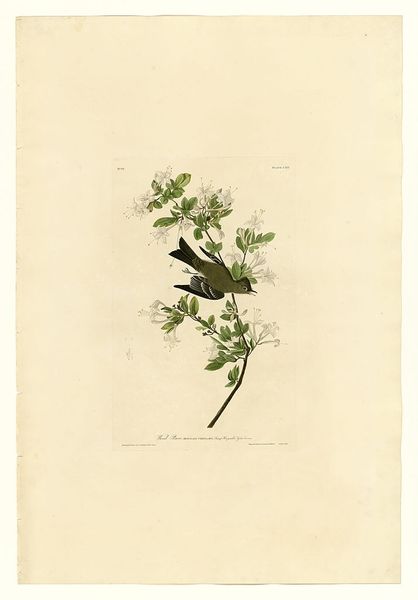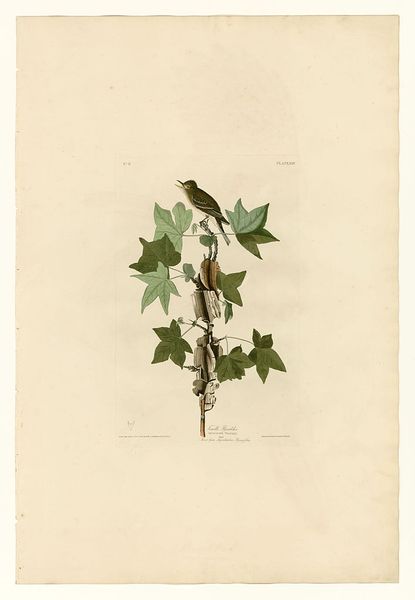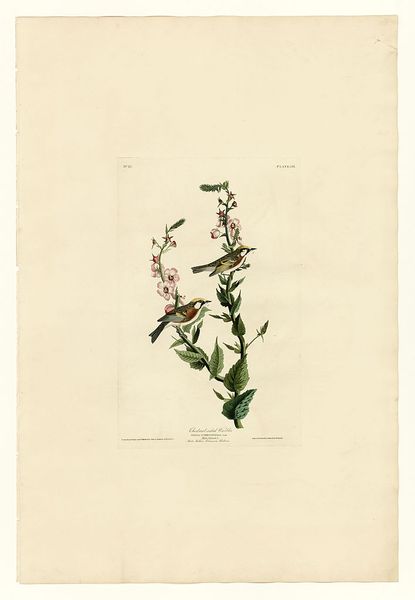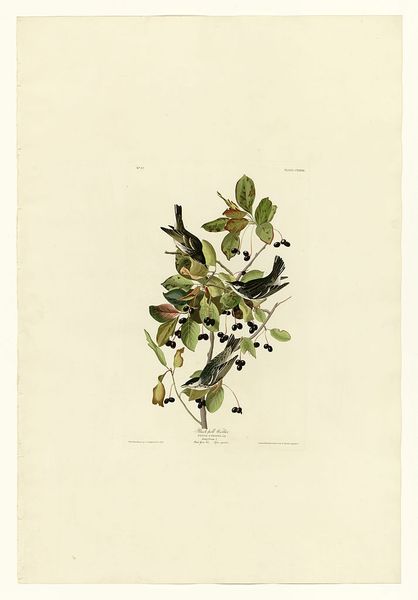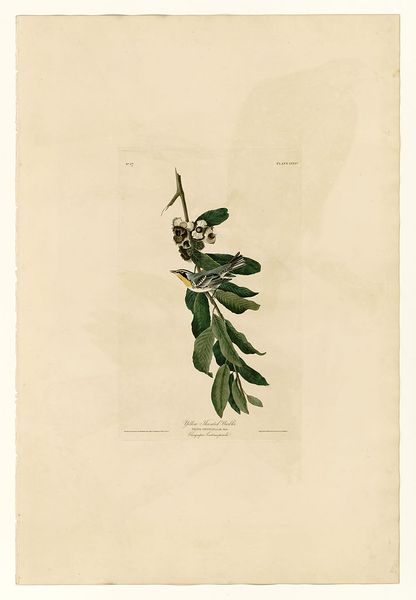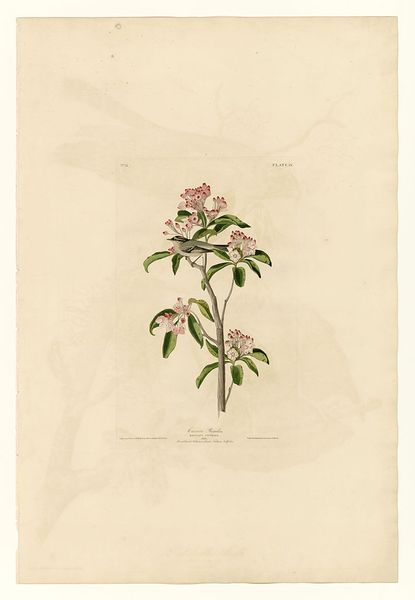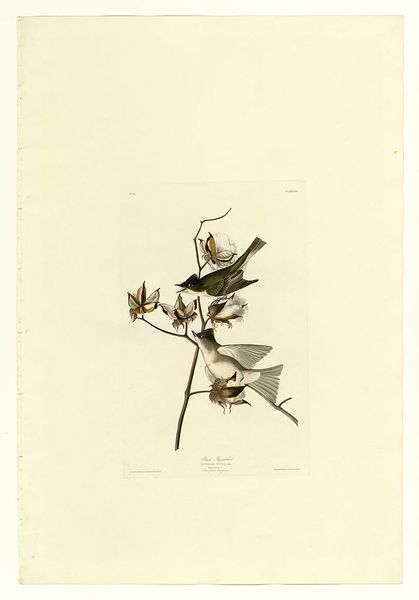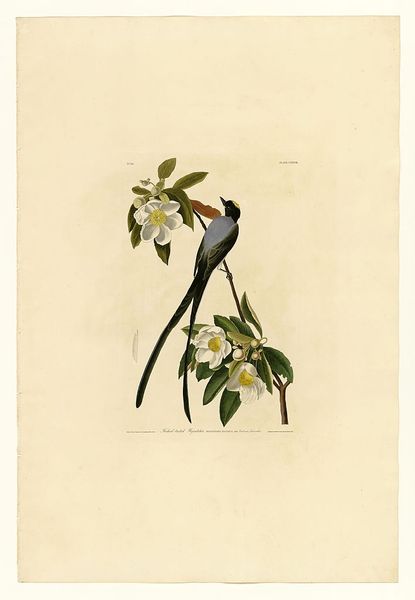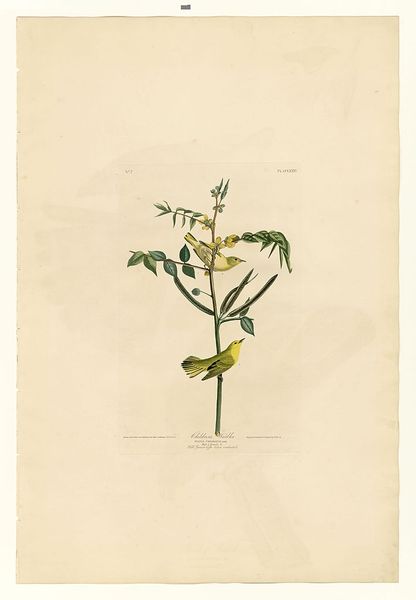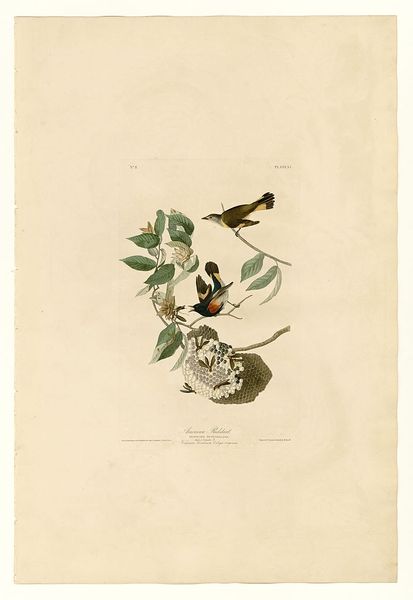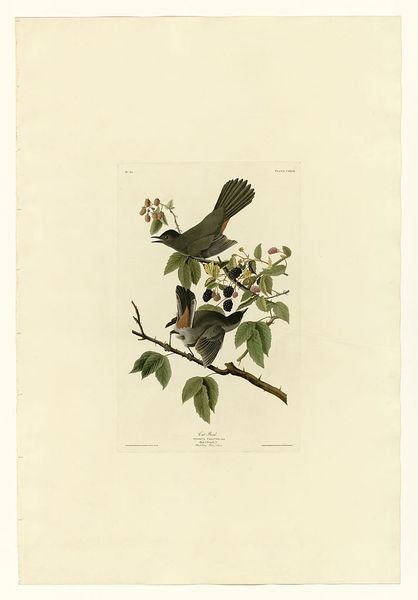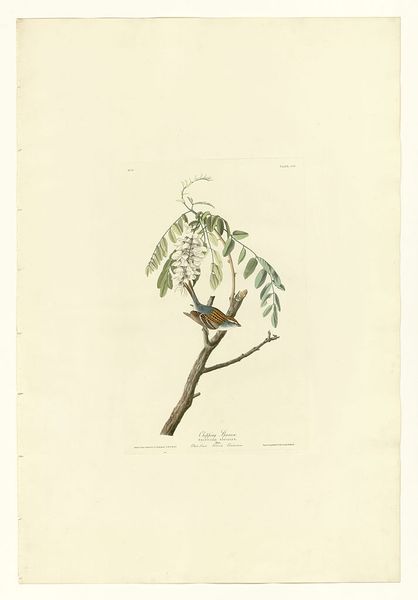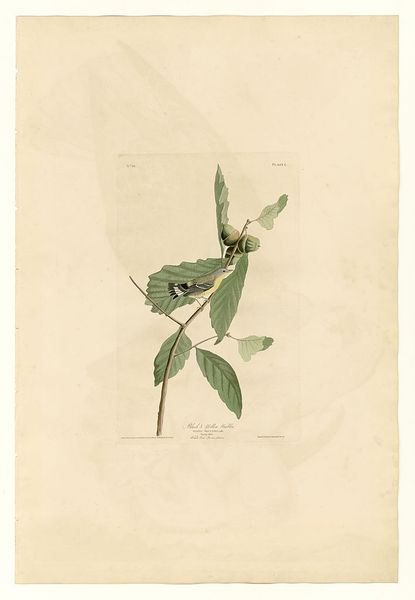
drawing, painting, plein-air, watercolor
#
vegetal
#
portrait
#
drawing
#
painting
#
plein-air
#
landscape
#
flower
#
watercolor
#
plant
#
romanticism
#
watercolour illustration
#
naturalism
#
botanical art
#
realism
Copyright: Public domain
Editor: Here we have Plate 119, "Yellow-throated Vireo," by John James Audubon, rendered with watercolor. It's a strikingly delicate illustration; the bird looks like it's about to burst into song. What’s your take on this work? Curator: This piece draws my attention to the social implications of artistic production and consumption at the time. Audubon, as a naturalist, engaged with the land, extracting its image. Consider the paper itself, likely made with labor and resources tied to the exploitation of natural materials. Editor: That's interesting, I hadn’t thought about the paper’s origins. Curator: Right. Also consider Audubon’s process: the hunting, specimen preparation, and detailed painting – each step involves a material transformation reflecting specific social and economic structures. This differs significantly from contemporary artists, where we might consider the means by which images circulate and are digitally reproduced and remediated. Editor: How does his work, in your view, speak to the idea of consumption? Curator: It suggests a consuming gaze – Audubon's impulse to document and classify nature mirrors the larger societal drive to understand and exploit the natural world. The romantic naturalism of the style should not veil the implicit power dynamics related to colonial-era consumption and land appropriation. How does Audubon's detailed work intersect with these material aspects of society? Editor: It definitely puts a different lens on the work. It highlights not just what’s depicted but also how the whole process is connected to its time. I think I understand your perspective. Thank you for elaborating on Audubon's materialism, I'll make sure I'll always think about those implications!
Comments
No comments
Be the first to comment and join the conversation on the ultimate creative platform.
